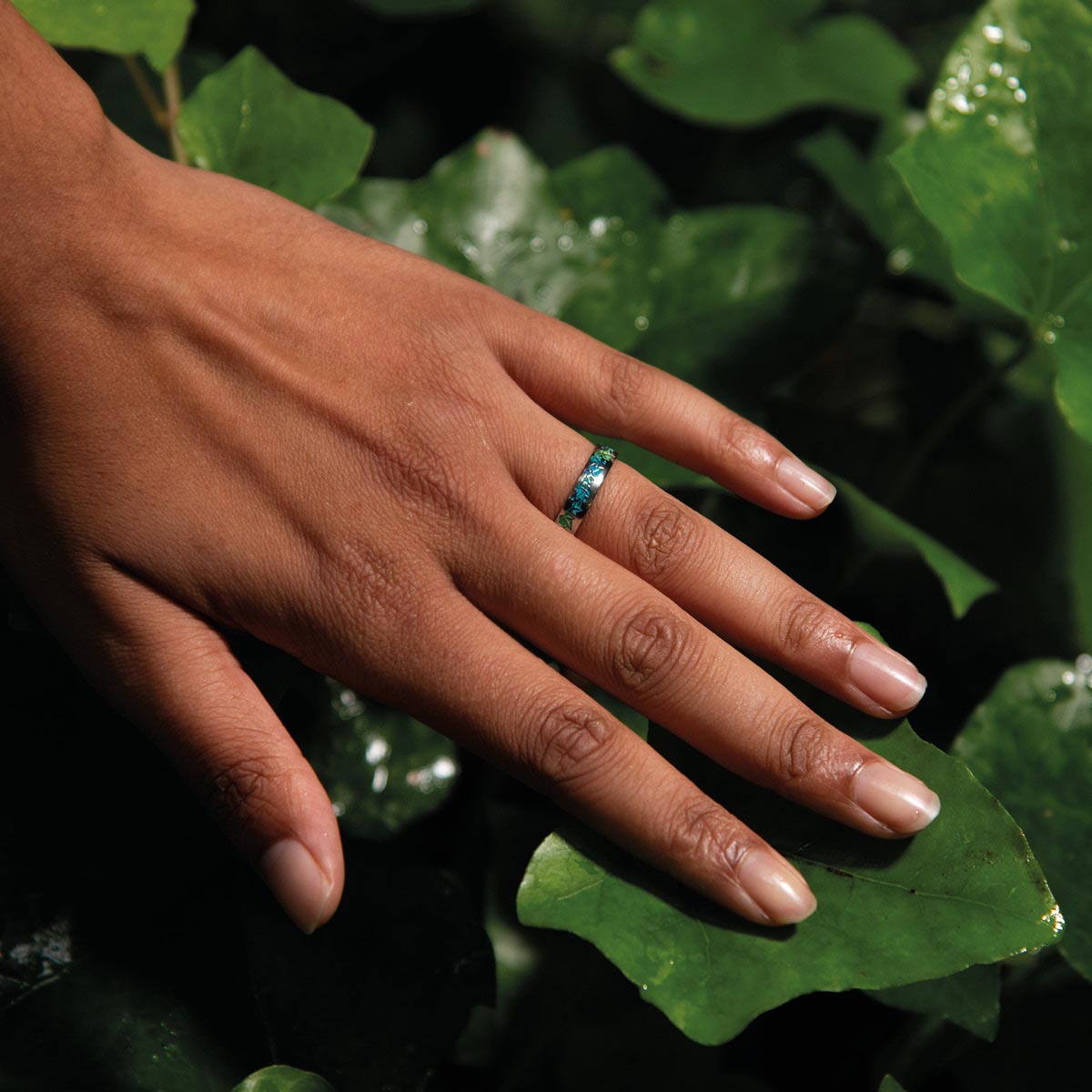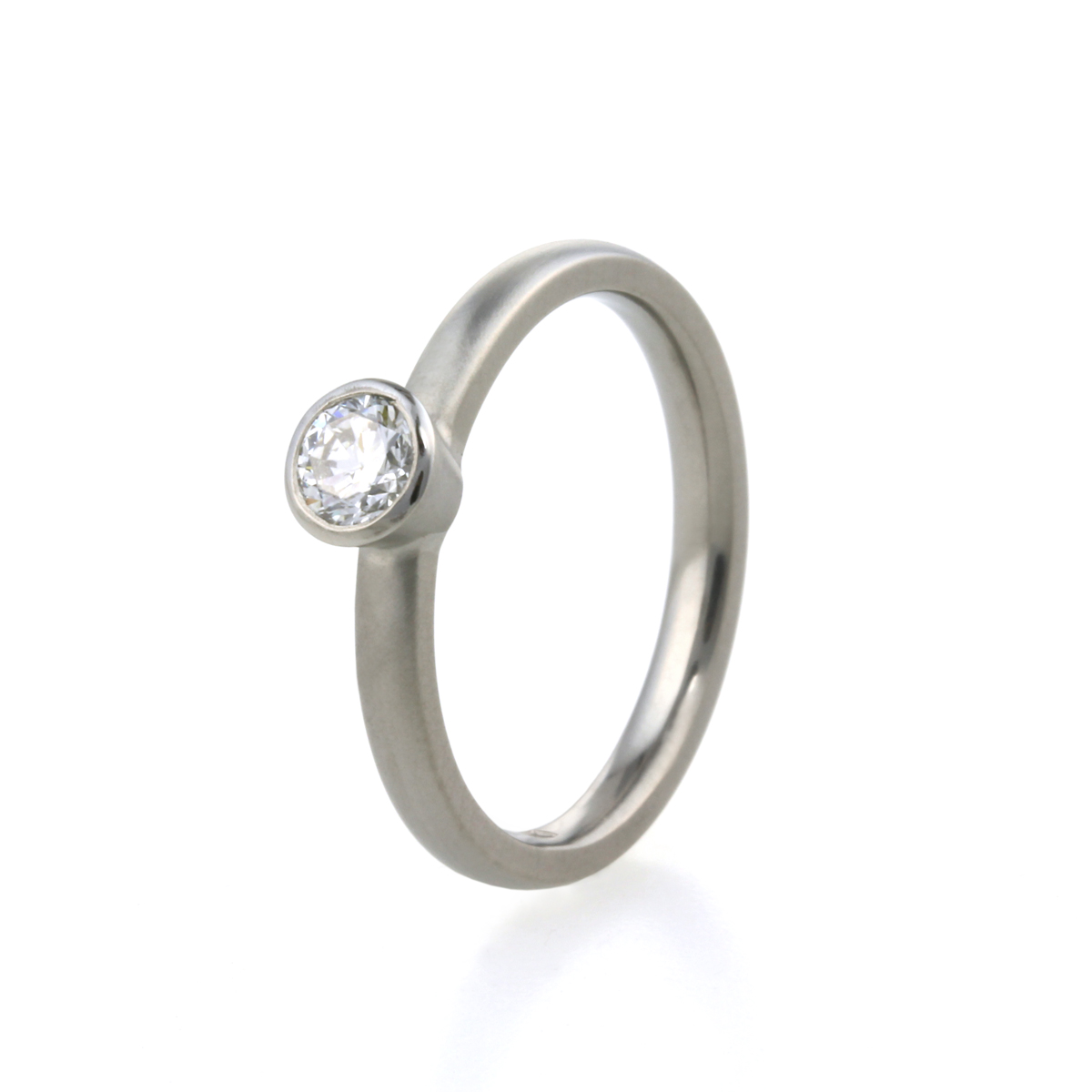
The first stop is the ore extraction process, because it sets the foundation for sustainability.
Ore mining requires water, energy and chemicals and so does the metal extraction process from the ore itself.
With ore mining, metals that require deep mining techniques or large mining areas are more harmful to the environment.
The choice of chemicals and the chemical processes used for metal extraction, on the other hand, have a different impact on the environment.
Understanding how these factors play out across various jewellery metals will empower you to better align with the necessity for a more sustainable world.
The journey from extracted metal to finished piece is also very important in defining sustainability.
Sustainable production methods are those that rely on reduced chemical waste, energy consumption and ensure a safe and fair working environment.
Some of the key factors here are the metal itself, and the energy and chemical demands it requires to work the material into a piece of jewellery.
By choosing jewellery crafted under such conditions, you can reward the right supply chain behaviours, promoting practices that respect both the environment and human dignity.
This can be an overlooked aspect, but its impact is significant and far reaching.
As we’ve seen so far, turning something into something else necessarily requires resource consumption.
However, the supply chain cycle can be minimised, and therefore new resources can be preserved, when the product is made to last.
For the jewellery industry, a durable piece transcends time, becoming a cherished heirloom rather than a fleeting object.
But there’s more: durability also means less frequent replacement and, consequently, reduced demand for new resources.
Often, our choice of materials has a direct impact on the environment beyond the immediately obvious. If you think about the resource savings that a durable product brings to the table, the cumulative effects of this over time are simply too big to ignore.
By understanding the metals that resist the test of time, versus the ones that are more susceptible for damages, you can make conscious choices that align with your sustainable values.
In the lifecycle of sustainable jewellery, the end is just as important as the beginning.
Materials that can be recycled or repurposed ensure that your jewellery's legacy is one of resource renewal, not depletion.
Embracing recyclable materials reinforces circular economies, where end-of-life items spawn into new creations with minimal impact on waste.
That said, metals recycle in different ways.
Sometimes, the metal’s quality is diminished by the recycling process, making the material less appealing or suitable for a new lease of life, and triggering a new supply chain cycle which starts with the extraction of new raw materials.
By understanding which metal recycles better than others, you can align your passion for jewellery with your dedication to a sustainable future, creating a powerful statement of your values and vision for a better world.

At its core, titanium’s inherent qualities—especially strength and durability—greatly support the principles of sustainable jewellery, which means that when you choose titanium, you're not just selecting an accessory, you're embracing a way of life that values longevity, efficiency, and respect for nature.
Here’s a more detailed breakdown of titanium’s sustainability profile.
Titanium's durability is one of its standout features, offering resistance to corrosion and wear that far surpasses softer metals like silver.
A titanium ring, for instance, can withstand daily wear and tear for decades without significant degradation, whereas a silver piece may require refurbishment or replacement much sooner, leading to additional resource use and waste.
Over time, this makes a real positive contribution towards the environmentally friendly profile of titanium.
When it comes to recycling, titanium maintains its integrity and quality without degradation. This enduring recyclability of titanium ensures that it can be reused for new pieces without loss of performance or aesthetics, supporting sustainable use of resources.
In conclusion, titanium emerges as a particularly environmentally friendly option for jewellery, mostly thanks to its unique combination of strength, durability, and recyclability.
These attributes collectively ensure that less titanium is required for the same applications compared to other materials, thereby reducing the need for frequent replacements and diminishing the demand for new material extraction.
This not only conserves resources but also limits the environmental impacts associated with mining and production.
Furthermore, titanium's high recyclability enhances its sustainability, supporting a circular economy that lessens the environmental footprint of the jewellery industry.
By focusing on these qualities, it becomes evident that titanium offers a viable and more sustainable alternative for jewellery, aligning with the broader goals of environmental conservation and sustainability.
For an intuitive snapshot of how titanium performs versus other metals, here’s a table comparing the most popular jewellery metals against various sustainability metrics. The scoring goes from 1 (bad) to 5 (great).
Note that this table should only be used for general guidance only, but it’s helpful in providing an easy and simple way to explore the metals fitness for an environmentally friendly world.
Titanium ranks consistently higher across all criteria due to its energy-efficient extraction process, minimal water and chemical usage, low landscape disruption, excellent material efficiency, and superior durability and recyclability.
Gold and Silver are ranked lower in most categories due to their energy-intensive extraction processes, significant water and chemical usage, and substantial landscape disruption. Their durability is moderate, and while they are recyclable, the processes are complex due to alloying.
Stainless Steel shows decent performance in most criteria, with its energy consumption for production and landscape disruption being notable concerns. It has good material efficiency and recyclability.
Tungsten has moderate rankings across the board, with particular concerns regarding its energy-intensive production process, even though it has good durability.
Finally, as you hunt for your next great jewellery piece, it’s important to be aware of some tips and tricks to recognise genuine titanium products.
Not only this will support you with making a high quality purchase, but it will empower you to reward the suppliers that play by the book, penalising the ones that don’t.
Here are some practical tips.

As we've navigated through the intricate landscape of sustainable titanium jewellery, we've uncovered the advantages it holds over traditional jewellery materials in terms of environmental and ethical considerations.
From its relatively lower energy consumption and landscape disruption during extraction, to its superior durability and recycling potential, titanium emerges as an excellent choice of sustainability in the jewellery industry.
If you’re looking to update your wardrobe with jewellery that not only enhances your uniqueness but also plays nice with our environment, why not have a browse of our best products here.
Or maybe, take a peek at our collections. Who knows, you may find your next favourite earrings, necklace or ring!